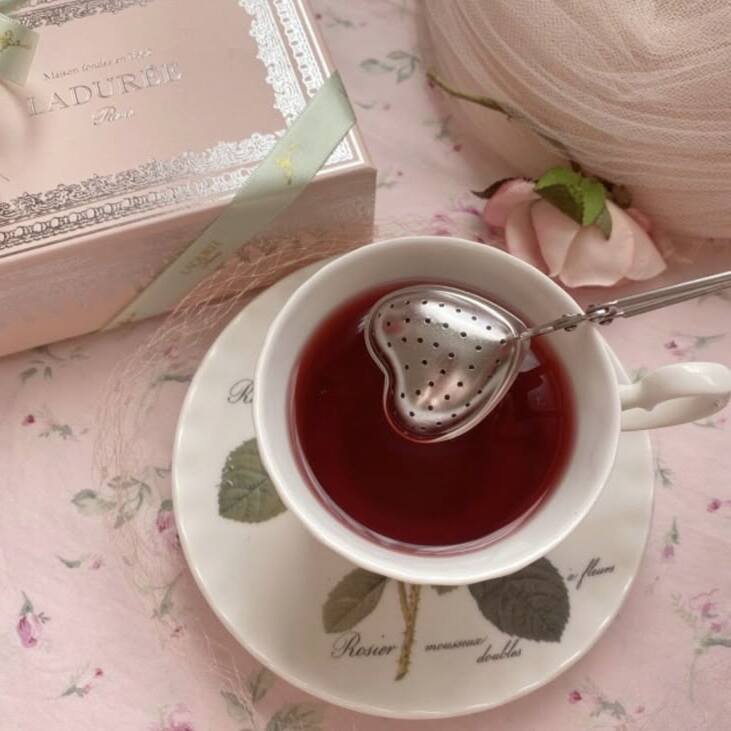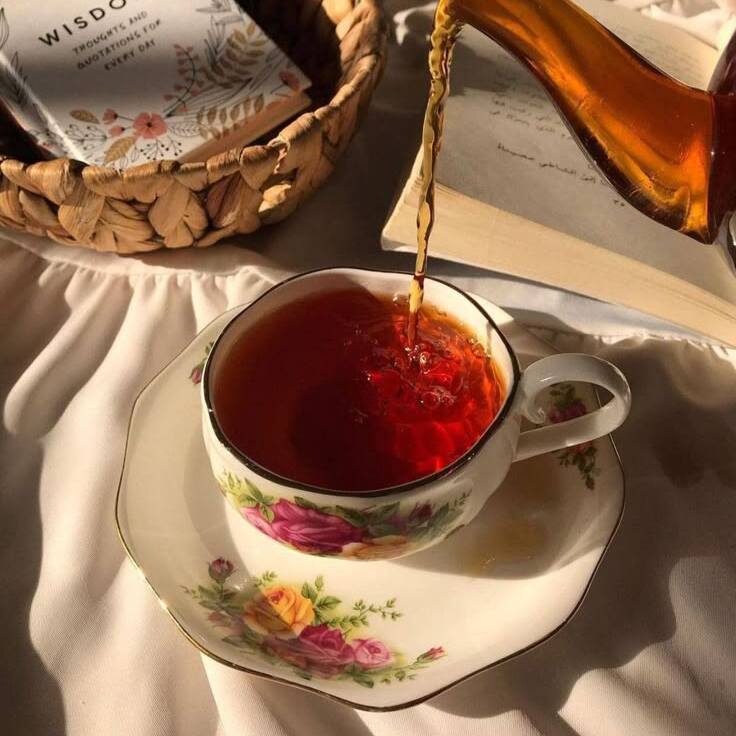What is Red Tea?
Red tea, also known as rooibos, comes from the Aspalathus linearis plant. It is caffeine-free and well-loved for its health benefits. With natural sweetness, it’s a popular herbal infusion worldwide. Let’s explore its origins and types.
Origins and History of Rooibos Tea
Red tea originated in South Africa centuries ago. Indigenous communities harvested it for medicinal use. Once discovered by Dutch settlers, it gained wider recognition. By the 20th century, cultivation practices improved, leading to global exports. Today, it’s a staple in many homes across the world.
Different Types of Rooibos Tea
There are two primary types: green rooibos and traditional red rooibos. Both come from the same plant but differ in processing. Red rooibos undergoes oxidation, giving it a deep flavor and reddish color. Green rooibos skips the oxidation, maintaining its lighter taste and color. Both types share similar health benefits but vary slightly in flavor profiles.

Nutritional Profile of Rooibos Tea
Red tea is packed with nutrients that contribute to its health benefits. This caffeine-free drink provides essential vitamins, minerals, and antioxidants that nourish the body and support overall health.
Key Vitamins and Minerals
Red tea contains several important vitamins and minerals:
- Vitamin C: Supports immune health and combats free radicals.
- Calcium: Promotes strong bones and teeth.
- Iron: Helps red blood cell production and prevents anemia.
- Magnesium: Regulates muscle and nerve function.
- Potassium: Maintains healthy blood pressure and electrolyte balance.
- Zinc: Strengthens the immune system and aids in wound healing.
These nutrients make rooibos tea a valuable addition to a balanced diet.
Antioxidants Present in Red Tea
Red tea is rich in powerful antioxidants such as:
- Aspalathin: Unique to rooibos, it reduces oxidative stress and inflammation.
- Quercetin: Protects cells from damage and lowers the risk of chronic diseases.
- Nothofagin: Offers calming effects and protects against cellular aging.
These antioxidants help neutralize free radicals in the body. This reduces risks of chronic illnesses like heart disease and cancer. Antioxidants in red tea also contribute to glowing, youthful skin. By including red tea in your routine, you can enjoy these amazing nutritional benefits.
Health Benefits of Red Tea
Red tea offers a range of impressive health benefits that can enhance your overall well-being. Thanks to its rich nutrients and antioxidants, this delightful beverage supports various aspects of health.
Boosting Immune Health
One of the key benefits of red tea is its ability to strengthen the immune system. It is packed with antioxidants that play a crucial role in maintaining immune function. Aspalathin, a unique compound found in red tea, helps reduce oxidative stress and protects immune cells from damage. Furthermore, the tea is rich in vitamin C, which enhances the body’s defenses against infections and illnesses. Regular consumption of red tea can help maintain a robust immune response, making it an excellent addition to your daily routine.
Supporting Digestive Health
Drinking red tea also promotes healthy digestion. The tea contains anti-inflammatory properties that can soothe the stomach. Its natural compounds support a balanced gut microbiome, which is essential for digestive health. Additionally, rooibos—another name for red tea—helps alleviate common issues like cramps and bloating. Its caffeine-free nature ensures that it is gentle and calming on the digestive tract, making it suitable for people with sensitive stomachs.
Promoting Cardiovascular Health
Red tea is also considered heart-friendly due to its impressive antioxidant profile. The presence of quercetin helps lower inflammation and improve blood vessel health. Potassium, another essential component in rooibos tea, aids in regulating blood pressure and can help reduce the risk of hypertension. Drinking rooibos tea regularly can contribute to a healthy heart and minimize cardiovascular issues over time.
Enhancing Skin Health
Finally, red tea promotes skin health through its high levels of antioxidants. These compounds work to reduce free radical damage, helping to prevent premature aging. Nothofagin, another beneficial component, protects skin cells and offers a soothing effect. Additionally, the tea’s natural hydration and nutrient content keep the skin glowing and youthful. Incorporating red tea into your routine can enhance skin health from within, providing a natural and effective way to maintain a radiant complexion.

Weight Loss and Red Tea
Red tea is not just a refreshing drink; it can support your weight loss journey. Its natural compounds and nutrients play a key role in promoting healthy weight management. Let’s explore how it contributes to weight loss.
How Rooibos Tea Aids in Weight Management
Red tea aids weight management in various effective ways. Here are some key reasons why it may be beneficial for those looking to manage their weight.
- Low in calories: Rooibos tea is naturally calorie-free, making it an excellent substitute for sugary drinks and calorie-laden beverages. Enjoying rooibos tea instead of these options helps reduce overall calorie intake, which is important for weight management.
- Reduces hunger cravings: Drinking rooibos tea can help control appetite and suppress hunger cravings. This can prevent overeating and make it easier to stick to a healthier eating plan. Rooibos tea’s soothing properties may also help you feel satisfied without additional snacks.
- Supports digestion: The anti-inflammatory properties of rooibos tea work to soothe the stomach and improve nutrient absorption. Good digestion is essential for effective weight management, as it ensures that your body utilizes the nutrients from the food you consume.
- Balances blood sugar: Rooibos tea plays a role in regulating blood sugar levels, which can help reduce fat storage in the body. By maintaining stable blood sugar levels, you may experience fewer energy crashes and cravings for unhealthy snacks.
- Hydration support: Staying hydrated is vital for metabolism and the breakdown of fat. Rooibos tea contributes to hydration, supporting your body’s natural processes and enhancing overall fat metabolism.
Regular consumption of red tea, combined with a balanced diet and exercise, can promote sustained weight loss and overall well-being.
Metabolism-Boosting Properties
Red tea is known to provide a gentle boost to metabolism. Here’s how it helps:
- Rich in antioxidants: Compounds like aspalathin reduce oxidative damage, supporting metabolic efficiency.
- Improves energy conversion: Nutrients in rooibos tea help with breaking down fats into energy.
- Enhances calorie burning: Its active compounds may support the body’s natural fat-burning process.
- Caffeine-free option: Unlike caffeinated beverages, rooibos tea boosts metabolism without causing jitters.
Including red tea in a daily routine can naturally support metabolic health. Combined with exercise, it can amplify weight loss results. Enjoy red tea as part of a healthy lifestyle to achieve long-term fitness goals.

Rooibos Tea vs Other Teas
Red tea stands out among various tea options due to its unique health benefits and properties. When comparing red tea to popular types, it becomes clear why it is often favored for its advantages.
Comparing Health Benefits
- Red Tea: This tea is packed with antioxidants such as aspalathin and quercetin. These powerful compounds help combat oxidative stress and slow down the aging process. Additionally, rooibos tea is known to promote cardiovascular and immune health while supporting digestion naturally.
- Green Tea: Rich in polyphenols and catechins, green tea is often praised for its weight loss benefits and contributions to heart health. Its compounds help boost metabolism and may enhance fat burning.
- Black Tea: Known for its strong flavor, black tea contains theaflavins and flavonoids. These antioxidants improve gut health and reduce inflammation. Black tea is also linked to enhanced mental alertness.
- Herbal Teas: Generally caffeine-free, herbal teas offer varying benefits based on their ingredients. They can provide calming effects, digestive support, or even relief from certain ailments.
Differences in Caffeine Content
Caffeine content is another major differentiator among these teas:
- Red Tea: Completely caffeine-free, rooibos tea is perfect for those seeking relaxation and suitable for evening consumption without any stimulating effects.
- Green Tea: Contains moderate caffeine levels, providing a gentle energy boost without causing excessive jitters.
- Black Tea: High in caffeine, black tea is often chosen for its stronger pick-me-up effect, making it a popular morning beverage.
- Herbal Teas: Mostly caffeine-free, these teas are ideal for anyone looking for calming effects and diverse flavors.
Overall, red tea emerges as a gentler choice than green or black teas. Its balanced health benefits and caffeine-free nature make it suitable for all age groups, ensuring wellness and enjoyable consumption without stimulating effects. Comparing these teas highlights red tea’s unique position in promoting overall health and well-being.

How to Brew Rooibos Tea for Maximum Benefits
Brewing red tea correctly ensures you unlock its full health benefits and delightful flavors. The process is simple and requires attention to specific steps for the best experience.
Brewing Techniques
Follow these steps to brew the perfect cup of rooibos tea:
- Choose fresh red tea leaves: Opt for high-quality leaves to maximize flavor and nutrients.
- Measure the right amount: Use one teaspoon of tea leaves per cup of water.
- Boil water: Heat water until it reaches about 200°F (93°C) for optimal brewing.
- Steep the tea: Add the leaves to the hot water and steep for 5-7 minutes.
- Strain the tea: Remove the leaves using a strainer to enjoy a smooth, clear drink.
Experiment with steeping times to adjust flavor intensity. Longer steeping provides a deeper taste, while shorter steeping produces a lighter flavor.
Recommended Serving Tips
Enhance your rooibos tea experience by serving it thoughtfully:
- Enjoy it plain: Drink rooibos tea without additions to savor its natural sweetness and earthy notes.
- Add honey or lemon: Boost flavor and health benefits with these natural enhancers.
- Serve iced: Prepare a refreshing iced version for a cooling treat on hot days.
- Combine with spices: Infuse cinnamon, ginger, or mint for unique aroma and taste.
- Use in blends: Mix rooibos tea with other herbal teas for personalized flavor profiles.
Try experimenting with these serving tips for variety. Pairing rooibos tea with light snacks enhances the overall experience. Regularly brewing and serving red tea can become a soothing ritual in daily life.
Potential Side Effects and Precautions
Red tea is generally safe for most people. However, it may not suit everyone. Knowing its potential side effects and necessary precautions is important for safe consumption.
Who Should Avoid Red Tea
While red tea has many benefits, some individuals should avoid or limit its intake:
- People with low blood pressure: Red tea may lower blood pressure further, causing dizziness.
- Those with hormonal imbalances: It may impact hormones due to certain plant compounds, though research is ongoing.
- Individuals with specific allergies: Rarely, rooibos tea can trigger allergic reactions like rashes or itching.
- Pregnant and breastfeeding women: Consult a doctor before drinking rooibos tea as its effects are not fully studied.
If you belong to these groups, it’s best to consult a healthcare professional first.
Interactions with Medications
Red tea may interact with certain medications, affecting their performance. Here’s what to watch out for:
- Blood pressure medications: Combining rooibos tea with these can overly lower blood pressure.
- Diabetes drugs: It may amplify these medicines’ effects, causing low blood sugar.
- Chemotherapy treatments: Antioxidants in rooibos tea may interfere with specific cancer therapies.
- Cholesterol-lowering drugs: Monitor carefully, as its compounds might influence cholesterol medication effectiveness.
Always discuss with a doctor if you’re on medication and planning to consume red tea regularly. Knowing its impact ensures safe and enjoyable use, tailored to your individual health needs.

Where to Buy Quality Rooibos Tea
Finding high-quality red tea is essential to enjoy its maximum benefits. With proper selection, you ensure its flavor, aroma, and nutritional value are intact. Here’s how to make the best purchase decision.
Tips for Choosing the Best Red Tea
When buying red tea, pay attention to these key factors:
- Look for organic certification: Organic rooibos tea guarantees pesticide-free and chemical-free cultivation.
- Check packaging labels: Ensure ‘100% pure rooibos’ is listed for authentic red tea products.
- Choose loose-leaf tea: Loose leaves retain better flavor and nutrients than tea bags.
- Evaluate freshness: Avoid old or stale tea. Look for recent production dates.
- Inspect the color and aroma: High-quality rooibos tea has a deep reddish hue and earthy scent.
- Research the source: Red tea from South Africa ensures it’s grown in its native region.
Considering these tips will help you identify top-notch rooibos tea for your daily use.
Trusted Brands and Sources
You can trust several reputable brands and vendors for quality red tea:
- Established tea brands: Companies known for sourcing natural and organic teas, such as Twinings or Celestial Seasonings.
- Specialty tea shops: Local stores that specialize in herbal and loose-leaf teas provide fresh options.
- Online stores: Platforms like Amazon or tea-specific websites offer good selection and reviews.
- South African exporters: Direct suppliers from South Africa often sell premium-grade rooibos tea.
- Farmers’ markets: Buying from small-scale producers ensures freshness and transparency.
Select trusted sources to ensure authenticity and quality in every cup. Prioritize customer reviews to make informed decisions.